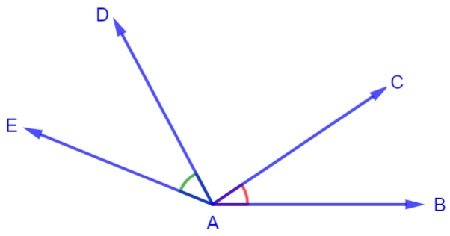Understanding angles is fundamental in geometry, and one key concept students encounter is adjacent angles. Let’s delve into what adjacent angles are, why they matter, and how students can grasp this concept effectively Adjacent Angles Definition.
What Are Angles?
Angles are geometric figures formed by two rays or lines that meet at a common endpoint, called the vertex. They are measured in degrees and play a crucial role in various mathematical and real-world applications.
Definition of Adjacent Angles
Adjacent angles are angles that have a common vertex and a common side between them. In simpler terms, they are angles that share a common arm and vertex but do not overlap Adjacent Angles Definition.
Properties of Adjacent Angles
- Adjacent Angles in Geometry:
- Adjacent angles are commonly found in geometric shapes and figures, where understanding their relationship helps in determining measurements and solving problems.
- Measurement:
- The sum of adjacent angles always equals the total angle formed by extending both angles into a straight line, which is 180 degrees.
- Visual Representation:
- Visual aids such as diagrams or interactive tools can aid in visualizing adjacent angles, making it easier for students to comprehend Adjacent Angles Definition.
Types of Angle Relationships
- Complementary Angles vs. Adjacent Angles:
- Unlike complementary angles, which add up to 90 degrees, adjacent angles share a common side.
- Supplementary Angles vs. Adjacent Angles:
- Supplementary angles add up to 180 degrees and can be adjacent when they share a common arm.
- Linear Pair:
- Adjacent angles that form a straight line are known as a linear pair. They are supplementary, totaling 180 degrees.
Real-World Applications
Understanding adjacent angles extends beyond the classroom:
- Architecture and Design: Architects use angles extensively to plan structures and ensure stability.
- Engineering: Engineers apply geometric principles, including adjacent angles, in designing everything from bridges to electronic circuits Adjacent Angles Definition.
Teaching Strategies
To help students grasp adjacent angles effectively:
- Interactive Activities: Engage students in hands-on activities where they measure and manipulate angles.
- Visual Aids: Utilise diagrams, videos, and interactive apps to illustrate angle relationships.
- Practical Examples: Provide real-life scenarios where understanding adjacent angles is crucial.
Conclusion
In conclusion, adjacent angles are fundamental in geometry, providing a basis for understanding more complex angle relationships. By mastering the definition and properties of adjacent angles, students not only enhance their mathematical skills but also develop a deeper appreciation for the role angles play in our everyday lives Adjacent Angles Definition.
